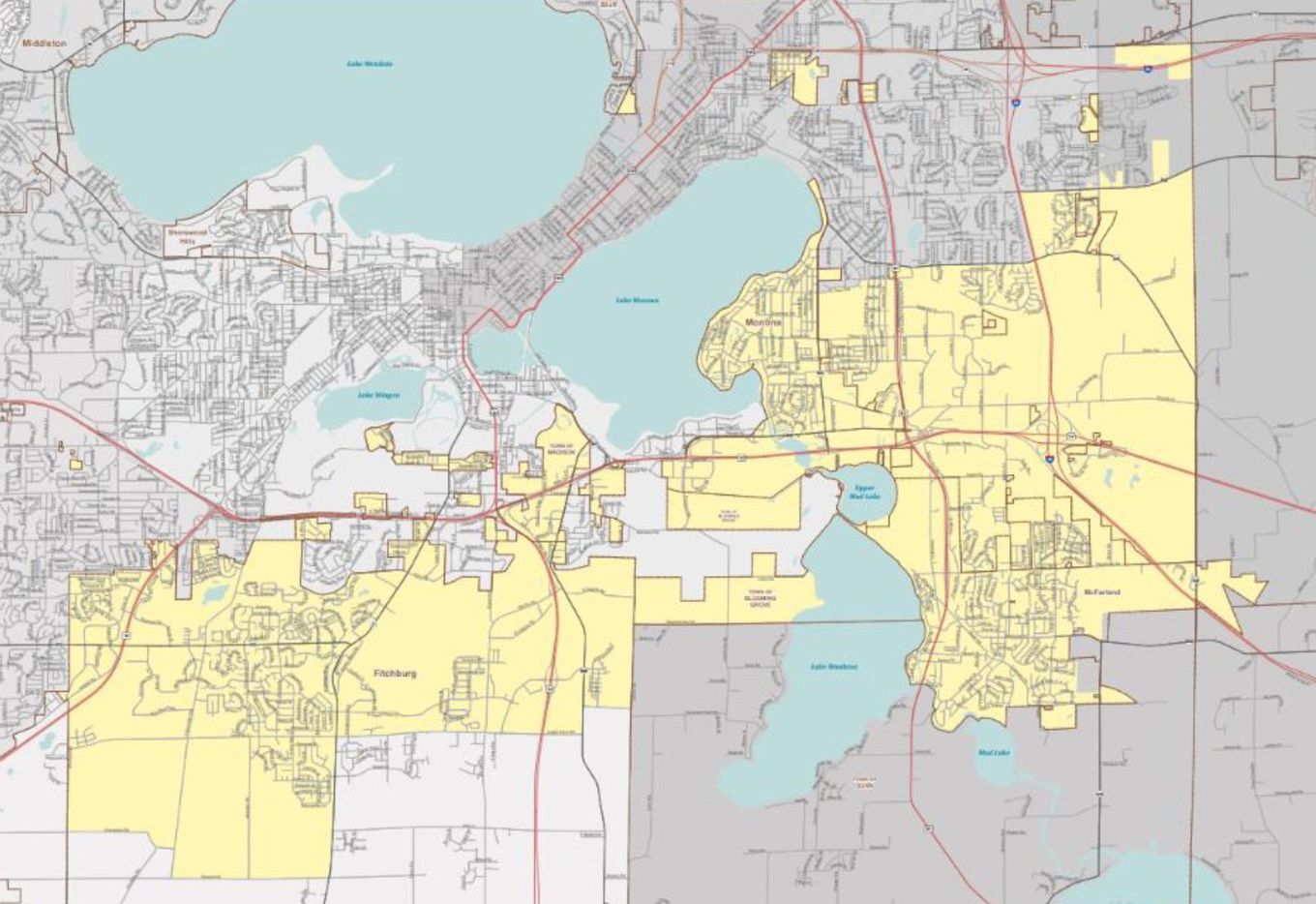
The Wisconsin Supreme Court on Friday ruled that the state’s Republican-gerrymandered state legislative maps are unconstitutional and must be redrawn before the 2024 elections.
Voting rights advocate Marc Elias hailed the ruling as “a huge win for democracy.”
BRETT WILKINS, CommonDreams
Justice Jill J. Karofsky wrote for the court’s 4-3 majority that the current maps violate a constitutional provision “that Wisconsin’s state legislative districts must be composed of physically adjoining territory.”
The ruling only applies to Wisconsin’s state Assembly and Senate maps, not its congressional map.
“Given the language in the Constitution, the question before us is straightforward,” Karofsky wrote. “When legislative districts are composed of separate, detached parts, do they consist of ‘contiguous territory’? We conclude that they do not.”
🚨BREAKING: Wisconsin Supreme Court STRIKES DOWN legislative maps and orders new maps in time for 2024 elections. If GOP legislature and Dem Gov cannot enact new maps, court will draw. Congrats to the lawyers involved.
A huge win for democracy!https://t.co/0Zy4JLRRpe pic.twitter.com/h2aMLG8mpb— Marc E. Elias (@marceelias) December 22, 2023
Justice Janet Protasiewicz—whose election earlier this year gave the court a liberal majority—voted with the majority. This was expected, as Protasiewicz made gerrymandering a key campaign issue and slammed the GOP-drawn maps as “rigged” and “unfair.”
Brought by Campaign Legal Center (CLC), Law Forward, the Election Law Clinic at Harvard Law School, Stafford Rosenbaum LLP, and Arnold & Porter, the lawsuit argued that “Wisconsin’s current legislative districts are unconstitutional in multiple ways” that deliberately split Democratic voters in mid-sized cities and towns, giving Republicans an illegal electoral edge.

Friday’s ruling states:
At least 50 of 99 Assembly districts and at least 20 of 33 Senate districts include separate, detached territory. A particularly stark example is the Madison-area 47th Assembly District… This district contains more than a dozen separate, detached parts that are home to thousands of people who must cross one or more other districts before reaching another part of the 47th.
Indigenous people are among those intentionally divided by Wisconsin’s maps.
“Although my people have been on this land for thousands of years, we continue to fight for fair and equal access to the ballot,” Anne Egan-Waukau, an enrolled member of the Menominee Nation, wrote for the Milwaukee Journal Sentinel. “We have faced significant barriers to voter access, from misinformation to restrictive voter identification laws, and most recently, gerrymandering.”
“Our current legislative maps are among the most skewed in the country, and have specifically divided tribal communities across districts, depriving our people of fair representation,” she added.
It’s a new day in Wisconsin.
Today, the Wisconsin Supreme Court confirmed what we all already knew: the GOP’s maps are unconstitutional. This is a monumental win for Wisconsin and our democracy. pic.twitter.com/GjI7dNZcVV— Representative Greta Neubauer (@RepGreta) December 22, 2023
Dan Lenz, a lawyer for the petitioners in the case, told The New York Times that the ruling is “a victory for a representative democracy in the state of Wisconsin.”
“For too long, right-wing interests have rigged the rules without any consequences,” he said. “Gerrymandered maps have distorted the political landscape, stifling the voice of the voters.”
Licensed under Creative Commons (CC BY-NC-ND 3.0).
Brett Wilkins is a staff writer for Common Dreams.
